 The House on Widows Hill (Ishmael Jones #9) by Simon R. Green
The House on Widows Hill (Ishmael Jones #9) by Simon R. Green Format: eARC
Source: supplied by publisher via NetGalley
Formats available: hardcover, paperback, ebook, audiobook
Genres: horror, mystery, paranormal, urban fantasy
Series: Ishmael Jones #9
Pages: 192
Published by Severn House on July 2, 2020
Purchasing Info: Author's Website, Publisher's Website, Amazon, Barnes & Noble, Kobo, Bookshop.org, Better World Books
Goodreads
Ishmael Jones investigates a haunted house . . . but is haunted by his own past in the latest of this quirky paranormal mystery series.
"That house is a bad place. Bad things happen there . . ."
Set high on top of Widows Hill, Harrow House has remained empty for years. Now, on behalf of an anonymous prospective buyer, Ishmael and Penny are spending a night there in order to investigate the rumours of strange lights, mysterious voices, unexplained disappearances, and establish whether the house is really haunted.
What really happened at Harrow House all those years ago? Joined by a celebrity psychic, a professional ghost-hunter, a local historian and a newspaper reporter, it becomes clear that each member of 'Team Ghost' has their own pet theory as to the cause of the alleged haunting. But when one of the group suddenly drops dead with no obvious cause, Ishmael realizes that if he can find out how and why the victim died, he will have the key to solving the mystery.
My Review:
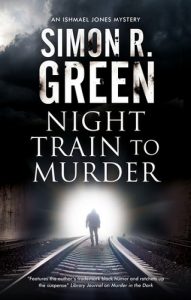 The House on Widows Hill is more of a twist on the typical English country house mystery than even Ishmael Jones and his partner Penny Belcourt usually have to contend with.
The House on Widows Hill is more of a twist on the typical English country house mystery than even Ishmael Jones and his partner Penny Belcourt usually have to contend with.
And that’s definitely saying something about the cases that the mysterious “Organization” usually assigns to this unconventional pair – even after the case in the previous book, Night Train to Murder, that has literally just dropped them off in Bath when this investigation begins.
Someone high up in that secretive, blacker-than-black-ops ‘Organization’ wants Ishmael and Penny to spend the night at that house on Widows Hill overlooking the city, a house with a reputation so dark that not only has no one lived there since the Victorian Era, but no one even goes near the place.
The place is so creepy that not even the local kids go there on dares, and haven’t for decades. Probably because of the overwhelming sense of impending doom and dread that comes over anyone and everyone who approaches the outer gates.
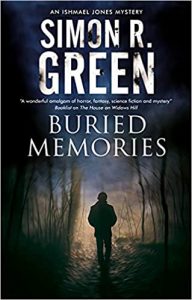 Someone in the ‘Organization’ is considering buying the place – or that’s what Ishmael and Penny are told, anyway. That night is a ‘one-night-only’ invitation to not just Ishmael and Penny as representatives of the potential buyer, but also to a whole team of “ghost botherers” (as Ishmael calls them) who have been begging – for years it seems – to get inside the old haunt. Along with one intrepid reporter who represents the family that owns the creepy pile – and really would like to get shed of the place once and for all.
Someone in the ‘Organization’ is considering buying the place – or that’s what Ishmael and Penny are told, anyway. That night is a ‘one-night-only’ invitation to not just Ishmael and Penny as representatives of the potential buyer, but also to a whole team of “ghost botherers” (as Ishmael calls them) who have been begging – for years it seems – to get inside the old haunt. Along with one intrepid reporter who represents the family that owns the creepy pile – and really would like to get shed of the place once and for all.
The rumor is that the house is haunted – but there have never been any reports of actual ghost sightings. At least not until the first member of the little group of wannabe ghost hunters dies in the midst of what Ishmael is sure is a fraudulent séance. Then again, Ishmael believes that all séances are fraudulent so he’s not disappointed that this one is all a wheeze – although he is peeved that he let himself get caught up in the distraction.
He just wasn’t expecting this particular bit of shenanigans to be a way of covering up murder. But he should have been, even if he’s a bit off his usual game. Because while there may not be any ghosts in the house, there certainly is a real something. Something that’s speaking to Ishmael himself in ways that seem entirely too familiar – even if they are speaking of a past that he can no longer claim as his own.
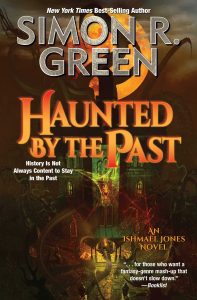 Escape Rating A-: I normally save this series for around Halloween, but I’m in the midst of a reading quandary that I hoped this book would solve – or at least beat back for a couple of days. I’m in the middle of listening to Erik Larson’s No One Goes Alone, and it reminds me A LOT of the Ishmael Jones series – at least so far. The thing about the Larson ‘book’ is that it’s audio only – there’s no actual book. If there were I’d have finished the damn thing by now, because I’m desperate to find out not just whodunnit but also how and why it was done. ‘Thumbing’ to the end of an audio is just damnably awkward – but I’ve been sorely tempted all the same. (I’ll finish the damn thing this week one way or another! And in case you can’t tell, I’m really, REALLY frustrated by the lack of a text.)
Escape Rating A-: I normally save this series for around Halloween, but I’m in the midst of a reading quandary that I hoped this book would solve – or at least beat back for a couple of days. I’m in the middle of listening to Erik Larson’s No One Goes Alone, and it reminds me A LOT of the Ishmael Jones series – at least so far. The thing about the Larson ‘book’ is that it’s audio only – there’s no actual book. If there were I’d have finished the damn thing by now, because I’m desperate to find out not just whodunnit but also how and why it was done. ‘Thumbing’ to the end of an audio is just damnably awkward – but I’ve been sorely tempted all the same. (I’ll finish the damn thing this week one way or another! And in case you can’t tell, I’m really, REALLY frustrated by the lack of a text.)
Once the resemblance between the two became clear to me, I picked up The House on Widows Hill, which is the next book in my catchup on this series, in the hopes of getting a bit of resolution by proxy for the book I can’t quite carve out enough time to finish.
It even worked, sorta/kinda. Which is awesomely relieving in a peculiar, reading obsessive kind of way.
So this book was pretty much the right book at the right time, even if my reading did start out as a search for a catharsis by substitution.
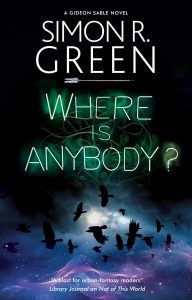 The House on Widows Hill very much has the classic haunted house vibe going on – even though with Ishmael and Penny involved the reader begins the story aware that it just isn’t going to go to any of the places that haunted houses normally go. That Ishmael gets shaken out of some of his internal certainties and securities added a bit to the ongoing arc of the series while at the same time ramping up the tension of both this book and the books in the series yet to come.
The House on Widows Hill very much has the classic haunted house vibe going on – even though with Ishmael and Penny involved the reader begins the story aware that it just isn’t going to go to any of the places that haunted houses normally go. That Ishmael gets shaken out of some of his internal certainties and securities added a bit to the ongoing arc of the series while at the same time ramping up the tension of both this book and the books in the series yet to come.
As I’ve already read the final book in the series so far, Haunted by the Past, I have one more book left in my catchup of this series, and that’s Buried Memories. Which I’ll probably get around to THIS coming Halloween, unless the urge for some of this author’s trademark line in snark hits me sooner and isn’t satisfied by the next book in his Gideon Sable series, Where is Anybody?, scheduled for publication in August.

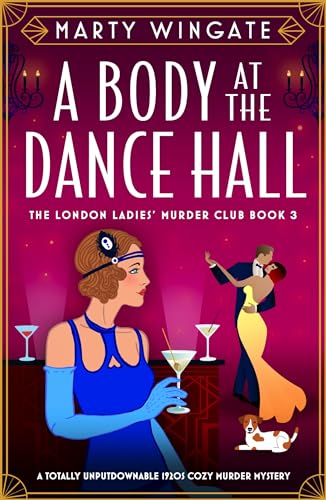 A Body at the Dance Hall (London Ladies' Murder Club #3) by
A Body at the Dance Hall (London Ladies' Murder Club #3) by 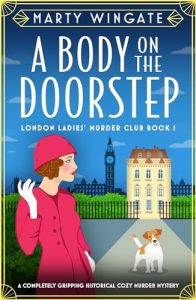 But trouble finds Mabel, as it has in her previous adventures,
But trouble finds Mabel, as it has in her previous adventures, 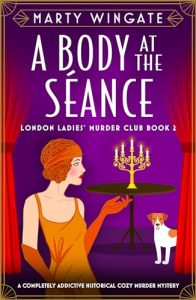 Escape Rating A-: I’ve already reached the point in Mabel’s adventures where I’m here specifically for her, and the particular case she’s working on is just extra. A compelling extra in the case of A Body at the Dance Hall, but still extra. I’m here to see how Mabel and her friends are doing, and to watch as she learns more about London, her assigned jobs for the Useful Women Agency, and the progress of her romance with her neighbor, Park Winstone. I’m especially here for the way that she keeps learning how to be a good investigator as well as an independent woman, a good worker and a good friend.
Escape Rating A-: I’ve already reached the point in Mabel’s adventures where I’m here specifically for her, and the particular case she’s working on is just extra. A compelling extra in the case of A Body at the Dance Hall, but still extra. I’m here to see how Mabel and her friends are doing, and to watch as she learns more about London, her assigned jobs for the Useful Women Agency, and the progress of her romance with her neighbor, Park Winstone. I’m especially here for the way that she keeps learning how to be a good investigator as well as an independent woman, a good worker and a good friend.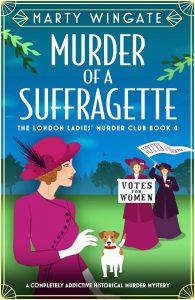 All of which means that in the middle of her assignment to show Roxanne the sights of London, Mabel also has a ringside seat on the behavior of Roxy, her father and stepmother, her mother when she arrives from America very much like the avatar of DOOM in T. Kingfisher’s
All of which means that in the middle of her assignment to show Roxanne the sights of London, Mabel also has a ringside seat on the behavior of Roxy, her father and stepmother, her mother when she arrives from America very much like the avatar of DOOM in T. Kingfisher’s 
 The Graveyard of the Hesperides (Flavia Albia Mystery, #4) by
The Graveyard of the Hesperides (Flavia Albia Mystery, #4) by 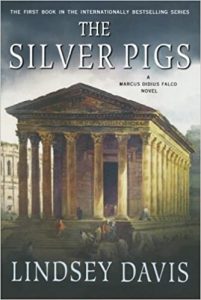 No matter how much technology advances, human nature remains pretty much the same, and that’s a big part of what makes historical mysteries so much fun AND so absorbing. That’s especially true in the
No matter how much technology advances, human nature remains pretty much the same, and that’s a big part of what makes historical mysteries so much fun AND so absorbing. That’s especially true in the 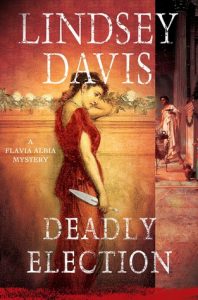 In other words, I came into this book with a whole lot of nostalgia and more than a bit of mystery reading background and baggage crowding my thoughts and falling out a bit willy-nilly all over the place. After all, it’s been nearly two years since I last visited Flavia Albia and her family in
In other words, I came into this book with a whole lot of nostalgia and more than a bit of mystery reading background and baggage crowding my thoughts and falling out a bit willy-nilly all over the place. After all, it’s been nearly two years since I last visited Flavia Albia and her family in 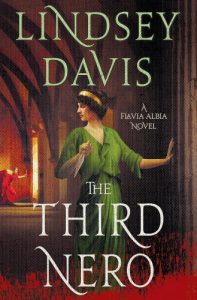 Even as she is in the midst of her own wedding and the hope of future happiness that it brings. If she can just manage to solve this case and get her in-laws out of her own and her formidable mother’s hair before someone’s face gets shoved into fist. Quite possibly her father’s.
Even as she is in the midst of her own wedding and the hope of future happiness that it brings. If she can just manage to solve this case and get her in-laws out of her own and her formidable mother’s hair before someone’s face gets shoved into fist. Quite possibly her father’s.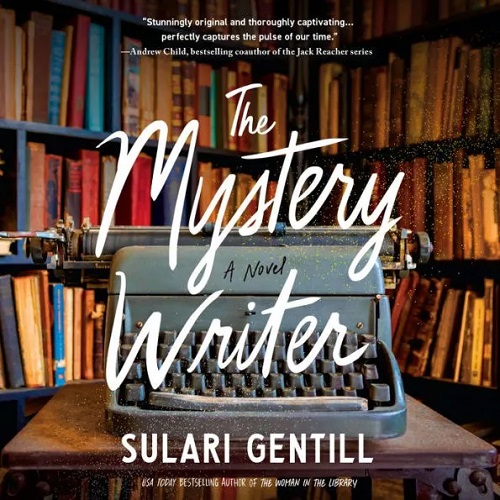 The Mystery Writer by
The Mystery Writer by  Escape Rating B-: I picked this up because I LOVED the author’s previous book,
Escape Rating B-: I picked this up because I LOVED the author’s previous book, 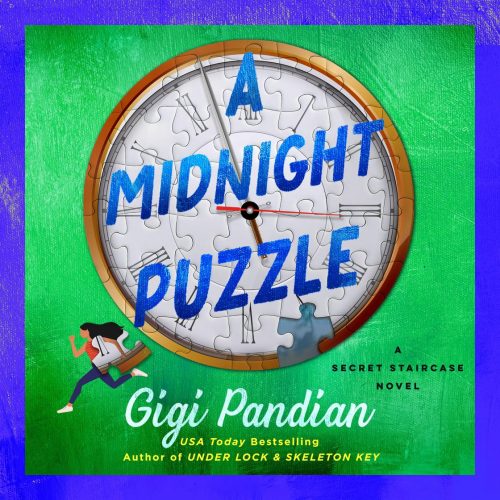 A Midnight Puzzle (Secret Staircase Mystery, #3) by
A Midnight Puzzle (Secret Staircase Mystery, #3) by 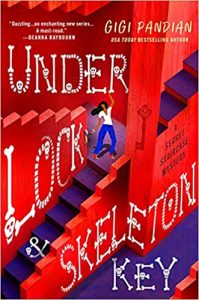 After her adventures – and misadventures – in the first two books in the
After her adventures – and misadventures – in the first two books in the 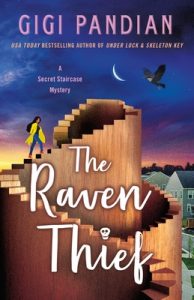 Escape Rating B: I have to admit that I went into this third entry in the series with a bit of trepidation after the muddle of
Escape Rating B: I have to admit that I went into this third entry in the series with a bit of trepidation after the muddle of 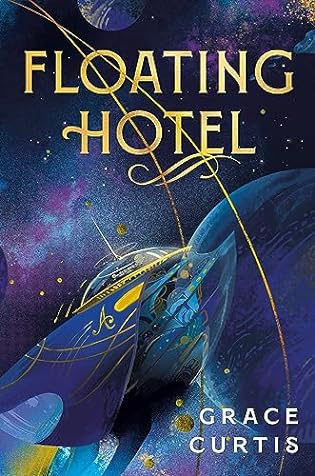 Floating Hotel by
Floating Hotel by 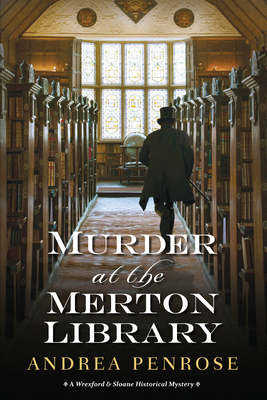 Murder at the Merton Library (Wrexford & Sloane, #7) by
Murder at the Merton Library (Wrexford & Sloane, #7) by  No matter how much, or how sincerely, they promised each other that they wanted a bit of peace and quiet with no murder investigations at the end of the previous book in the series,
No matter how much, or how sincerely, they promised each other that they wanted a bit of peace and quiet with no murder investigations at the end of the previous book in the series, 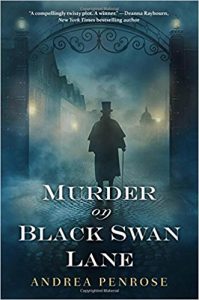 Escape Rating A-: I discovered this series last summer – another time when I was hunting for a good mystery series – and it has been an absolute delight every single time I’ve picked the series back up. But I held onto this entry because I’ve learned that no matter how great a series is – and this absolutely is – it just isn’t a good idea to read the series books too closely together no matter how much I’m tempted.
Escape Rating A-: I discovered this series last summer – another time when I was hunting for a good mystery series – and it has been an absolute delight every single time I’ve picked the series back up. But I held onto this entry because I’ve learned that no matter how great a series is – and this absolutely is – it just isn’t a good idea to read the series books too closely together no matter how much I’m tempted.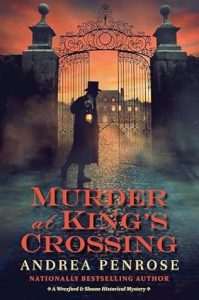 And on my third hand, one of the people caught up in this farrago clearly wasn’t onboard with all the deviltry involved, and could have had made much different choices, and we are confused by and feel for that character almost as much as Charlotte does.
And on my third hand, one of the people caught up in this farrago clearly wasn’t onboard with all the deviltry involved, and could have had made much different choices, and we are confused by and feel for that character almost as much as Charlotte does.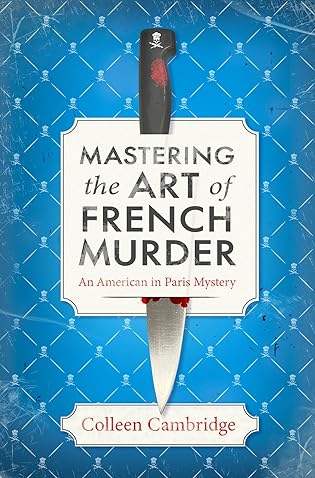 Mastering the Art of French Murder (An American In Paris, #1) by
Mastering the Art of French Murder (An American In Paris, #1) by  And then there’s Julia Child herself, much too boisterous to ever be considered merely a secondary character and certainly not a sidekick, who draws readers in with her true-to-life mannerism, her real, documented history working for the OSS in the war, and her larger-than-life presence on so many wonderful pages of this story.
And then there’s Julia Child herself, much too boisterous to ever be considered merely a secondary character and certainly not a sidekick, who draws readers in with her true-to-life mannerism, her real, documented history working for the OSS in the war, and her larger-than-life presence on so many wonderful pages of this story.
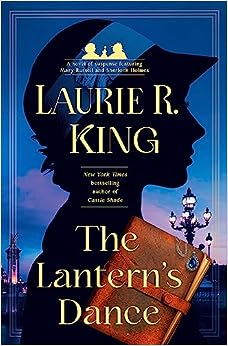 The Lantern's Dance (Mary Russell and Sherlock Holmes, #18) by
The Lantern's Dance (Mary Russell and Sherlock Holmes, #18) by 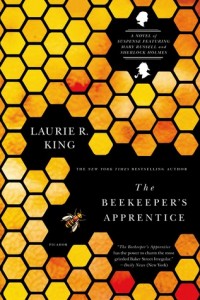 In the end, I did love this entry in the series, although it took me a bit to get there because of that slow start. But now that I’ve finished, I’m left with the impression that this is more of a family story than it is the kind of mystery that has more often been featured in this series, and in the Holmes canon and Russell Kanon in general. On this, the thirtieth anniversary of the publication of
In the end, I did love this entry in the series, although it took me a bit to get there because of that slow start. But now that I’ve finished, I’m left with the impression that this is more of a family story than it is the kind of mystery that has more often been featured in this series, and in the Holmes canon and Russell Kanon in general. On this, the thirtieth anniversary of the publication of 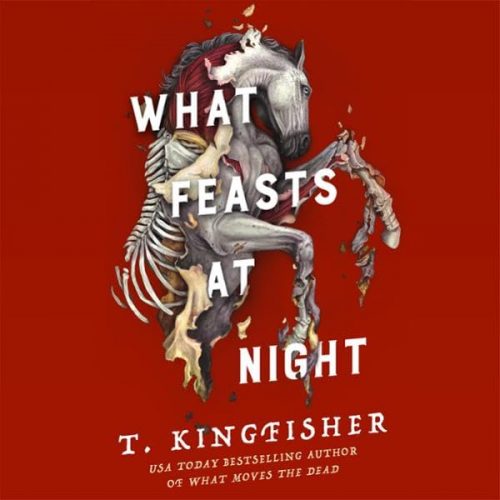 What Feasts at Night (Sworn Soldier, #2) by
What Feasts at Night (Sworn Soldier, #2) by 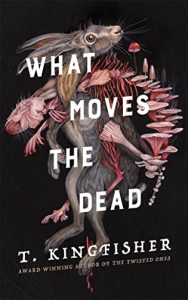 Escape Rating A-: I’m not sure whether to say that What Feasts at Night isn’t quite as creepy as
Escape Rating A-: I’m not sure whether to say that What Feasts at Night isn’t quite as creepy as